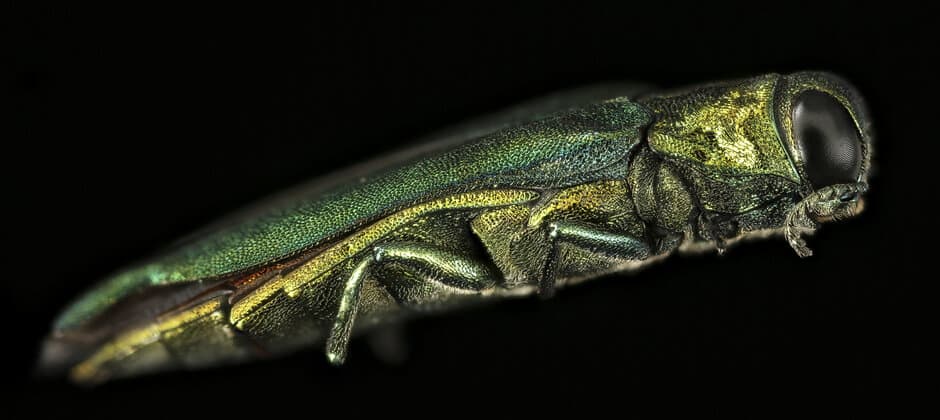Share this article
In ash borer-infested forests, focus on climate change
While forest management strategies in the U.S. East and Midwest often focus on stopping damage from the invasive emerald ash borer, researchers say forest conservation efforts shouldn’t neglect mitigating for climate change.
Researchers were trying to think of ways to help managers and communities plan for threats facing forests in northeast Wisconsin managed by the U.S. Forest Service and the Menominee Tribal Nation.
Erica Smithwick, a distinguished professor of geography at Penn State, wondered to what extent the forests faced threats from both insects and climate change. How these threats impact the forest will also impact the native wildlife that live there, Smithwick said. Jack pine ecosystems, for instance, may support different wildlife than sugar maples.
“How those different habitat types are rearranged will have implications for the species as well as its recreational value for hunting or just cultural or aesthetic value,” said Smithwick, the senior author of a study published in Ecosystems, which was led by her graduate student Stacey Olson, modeling how these threats will persist in the future.
Smithwick and her colleagues created a forest simulation model that estimated the effects of emerald ash borers and climate change in the area through 2100. To create the model, they added information on how trees grow, disperse seeds, die and interact with disturbances such as the ash borers or climate change.
They model assumed that greenhouse gases would not decrease in the next decade and that ash borers would pervade the forest. The team took into account that the area is considered a tension zone, where the vegetation type, climate and soil suggest climate change can have more drastic changes than usual.
The model found that climate change had a larger influence on biodiversity and composition of the forested landscape than emerald ash borers. “On one level it’s not super surprising,” Smithwick said. “Emerald ash borer is species specific, so it targets only several species of ash: white ash, green ash and black ash, within the area.”
In some areas, the model showed the emerald ash borer would completely remove ash trees, but other species would replace them. Climate change, on the other hand, was less discriminate, and its overwhelming effect on the forest surprised the researchers. Their model suggested that by 2100, northern hardwoods like beech and birch would decline, making up only about a third or less of the forest. Southern hardwoods, would increase as much as 23%, with black cherry becoming the most dominant tree species in the southern part of the study area.
The changing makeup of the forest could affect wildlife, as well as cultural and economic uses of the forest. Smithwick said the model can help managers make decisions about what they value and want to protect.
“We are at the point where managers are having to make decisions like that—make tradeoffs and act more preemptively in the face of those threats,” she said. “The simulations can help guide those decisions of when and where to selectively harvest for all sorts of economic and cultural reasons.”
Smithwick said the next part of the project includes assessing people’s values of forests. To do this, they are using virtual reality to imagine future forests. “The immersive experience allows us to assess values about outcomes,” she said. “If we know those, we can start to be proactive about forest strategies.”
Header Image:
Forests in the Midwest face double threats of climate change and emerald ash borers like this one.
Credit: Sam Droege/USGS








